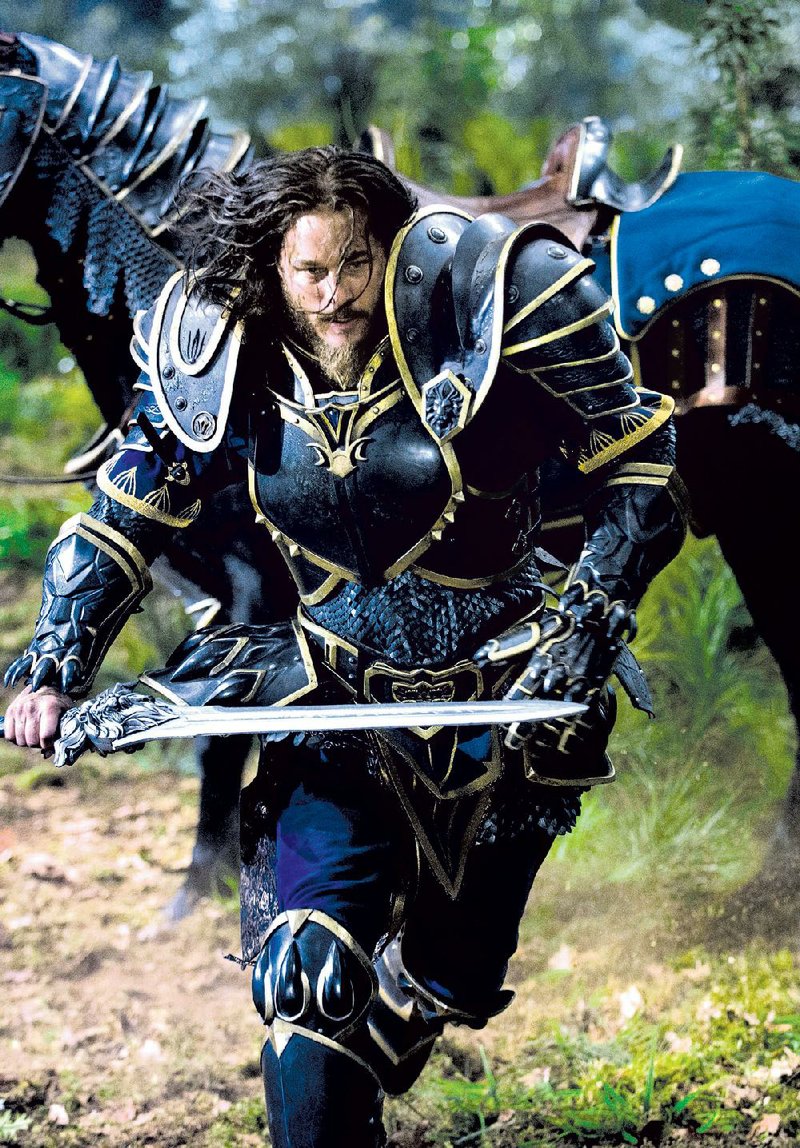If you've spent time running endgame content in Blizzard's World of Warcraft, you're familiar with the dreaded raid wipe. During these large-scale encounters, parties of multiple players fall victim to poor execution, bad timing and a lack of coordination. Frustration sets in, petty bickering ensues, and you're left wondering who to blame. But, in the end, the failure is a collective one.
Blizzard Entertainment's big-budget epic, Warcraft, is not unlike a raid wipe: Even with tempered expectations, it's hard to see past the film's few bright moments for what is mostly an awkward mess.
Being a fan of Blizzard games means that, at one time or another, you've seen their gorgeously animated game trailers or promos and thought, "Man, Blizzard; just make a movie already." That comes through best in the fully animated scenes devoted to Durotan, Draka and the rest of the orcs. Facial mapping and body movement are gorgeously done. Environments and buildings are meticulously detailed. Interactions among the orcs feel believable; relatable. They're infused with emotions that invoke the best of Warcraft author Christie Golden's novels, which tell the story of the orcs' quest for redemption after generations of manipulation and betrayal.
Unfortunately, the humans' side of the story is driven by uninspiring characters -- characters very different from their in-game counterparts. In the Warcraft games, Sir Anduin Lothar is the champion of Stormwind and one of the greatest warriors in human history. He's also 56, and bald. Travis Fimmel, who plays Lothar in the film, seems to have been billed instead as young Aragorn wannabe. Whereas in-game Lothar was battle-hardened and taciturn, Fimmel's Lothar is cocky and impetuous. Dominic Cooper's King Llane is a nest of empty platitudes who inexplicably holds his war council at a tavern in Goldshire, a town just a short ride from the capital.
There are some bright spots for the fully human actors. Ben Foster, as the powerful Medivh, Guardian of Tirisfal, subtly evokes the character's enigmatic personality with far-away glances. Paula Patton, as the half-orc Garona, does well to display the emotions of a woman split between worlds.
However, these performances fail to carry a disjointed plot and haphazard character development. Although Durotan and Draka's personalities are much the same as their in-game doubles, the circumstances they face have absolutely no basis in established lore. Garona, who acts as a double agent, falls for Lothar, not Medivh -- and Medivh seems to hint that he may even be her father. Lothar, canonically childless, is given a son in the film, and his mentoring of the young prince Varian is never mentioned. (Varian, who in the games reigns as the current King of Stormwind, named his son Anduin in honor of the great knight's deeds.)
The orcs fare little better. Warchief Blackhand, played by a heavily modulated Clancy Brown, spends his few lines grunting or raging; a complete waste of the actor's subtlety and range. Orgrim Doomhammer, wielder of his eponymous weapon, spends most of the film casting worried looks at Durotan instead of fighting. Durotan himself bafflingly challenges Gul'dan to a mak'gora, or honor duel, in front of the entire orcish horde -- a duel he, a born warrior, loses to the hulked-up sorcerer.
Some of this can be chalked up to Blizzard's infamous retconning. For example, Gul'dan, traditionally an old, frail mage, exists as a hulking, spiky thug in World of Warcraft: Warlords of Draenor. Blizzard has revised Durotan and Draka's murders so many times that players disagree on who, or what, did it. (We're also talking about a video game where demons possess space aliens and elves transform into trees. Still, Warcraft fans are persnickety about their lore.)
Perhaps the most distressing change from game to film: the orcs' source of power, fel magic, is never fully explained. In the film, Gul'dan sacrifices living beings to fuel his energies and power the Dark Portal, which was never the case in the series. In the games, the evil Burning Legion -- a horde of demons led by the fallen titan Sargeras -- manipulates Gul'dan into shunning his people's shamanistic traditions to follow the path of the warlock. By drinking the blood of the demon Mannoroth, the orcs turn bright green and become consumed with rage. In the film, Gul'dan can simply impart fel energy into any being, seemingly at will. He breathes fel energies into baby Go'el, Durotan and Draka's son, shortly after birth.
Although there are several blink-and-you'll-miss-it references to the games, like a stray murloc in Elwynn Forest and the color-coded districts of Stormwind City, Warcraft is sorely lacking in the spirit that has kept legions of fans coming back for more expansions, novels and spinoffs. Fans at BlizzCon 2014 provided the "For the Alliance!" and "For the Horde!" chants used in the film, but that appears to be the only element of the film with any fan involvement. Blizzard's Chris Metzen, who has crafted so much of the series' lore and voiced some of its most iconic characters, is credited as a co-producer, but this film has none of the warmth or humor of his work. If it did, it would be a darn sight better than this mess -- a movie that loses touch with why the games are so beloved in the first place.
Benjamin Waldrum is a lifelong gamer with a particular interest in real-time strategy and massively multiplayer online games, and was a World of Warcraft devotee for many years. He still keeps up with the lore and is eager to see the Burning Legion finally defeated.
MovieStyle on 06/17/2016
